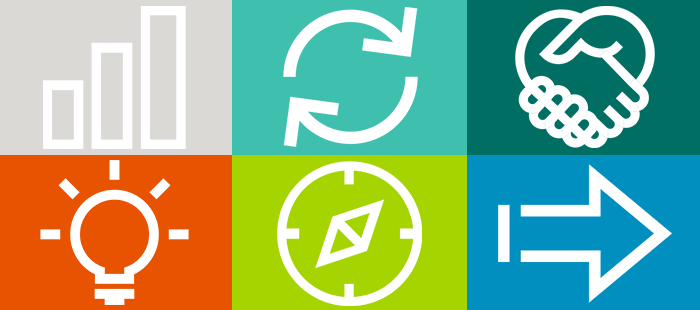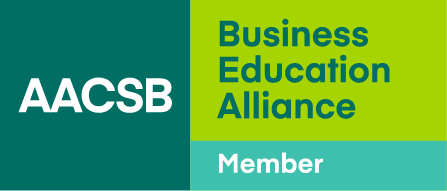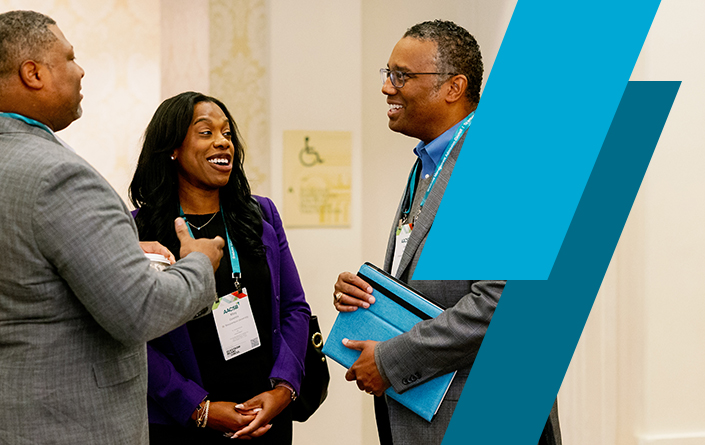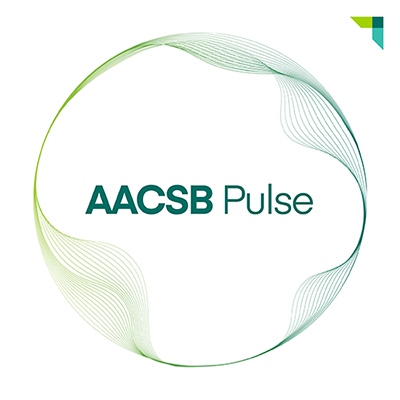Research Roundup: June 2025
Explore how AR drives green choices, marketing blurs ethics, trust favors negative reviews, students lead sustainability, and firms absorb innovation.
Dive into our monthly Research Roundup, showcasing the latest insights from the business education community to keep you informed of new and noteworthy industry trends. Here are this month’s selections:
From Digital Push to Shared Progress
- Researchers: Andrea Kerstens, Delft University of Technology; David J. Langley, University of Groningen
- Output: “An Innovation Intermediary’s Role in Enhancing Absorptive Capacity for Cross-Industry Digital Innovation: Introducing an Awareness Capability and New Intermediary Practices,” Journal of Business Research, 2025
- Overview: As digital technologies blur industry boundaries, the potential for innovation lies not just in what a firm knows but in how well it can absorb knowledge from unfamiliar domains. Yet many organizations lack the internal structure to recognize and apply ideas that originate outside their sector. This study explores how an innovation intermediary—an independent organization that connects and supports firms—helps build a firm’s absorptive capacity, or its ability to identify, understand, adapt, and apply external knowledge.
Researchers examined six cross-industry digital projects in the Netherlands, where firms from manufacturing, agriculture, construction, and energy partnered to develop technologies such as smart data platforms and AI-driven systems. A key contribution of the study is the introduction of awareness capability: a new phase in the innovation process that reflects how intermediaries help firms recognize opportunities they were not yet looking for.
- Findings: The innovation intermediary, which supported all six projects, had its most significant influence during the early stages of each initiative. By translating abstract digital concepts into concrete use cases, the intermediary helped firms understand what was possible and why it mattered. They hosted collaborative workshops, created pilot environments for experimentation, and facilitated cross-industry exchanges. In one case, this work led to a shared data communication standard in manufacturing. These efforts strengthened what researchers define as potential absorptive capacity—the early-stage ability to acquire and interpret external knowledge—distinct from later phases of absorptive capacity that involve transforming and applying that knowledge in practice.
However, firms showed less progress in applying and commercializing that knowledge. Only one project tracked long-term outcomes, and most lacked support through the final stages. While intermediaries clearly help firms get started, their role tends to taper off too soon. For business leaders, the findings point to the value of engaging intermediaries early to surface digital opportunities and build readiness across industry lines.
Trusting the Fake, Doubting the Real
- Researchers: Dezhi Yin, University of South Florida; Samuel D. Bond and Han Zhang, Hong Kong Baptist University
- Output: “The Illusion of Authenticity in Online Reviews: Truth Bias and the Role of Valence,” Institute for Operations Research and the Management Sciences, 2025
- Overview: As online reviews grow more influential in shaping consumer decisions, fake reviews pose a growing threat to trust in digital marketplaces. While much attention has focused on detecting deception algorithmically, far less is known about how consumers judge whether a review is real or fake when the truth is unclear. This study investigates three psychological patterns that shape these judgments: truth bias (a tendency to assume reviews are authentic), the veracity effect (greater accuracy in detecting real versus fake reviews), and the valence effect (how the tone of a review affects perceptions of credibility).
Drawing on truth-default theory and deception motives literature, the researchers ask whether people approach all reviews with equal skepticism or whether certain types of reviews are more likely to be believed. Their aim is to uncover how these psychological tendencies influence consumer interpretation and whether they function automatically or can be disrupted.
- Findings: Across five experiments involving over 800 participants, the study found consistent evidence of all three effects. First, despite being informed that only half of the reviews were real, participants classified an average of 58 to 62 percent of them as authentic, demonstrating a strong truth bias. Second, participants were more accurate at identifying real reviews than fake ones, confirming the veracity effect. For example, in one study, accuracy for real reviews reached 64.4 percent, compared to just 40.9 percent for fake ones. Third, consumers were more likely to trust negative reviews than positive ones, even though fake negative reviews are often more common in practice.
This valence effect was driven by an automatic projection of deceptive motives onto positive reviewers, which disappeared when participants were explicitly reminded that both types of reviews could be fake. Together, the findings suggest that consumers are not well equipped to detect fake reviews and rely on gut-level assumptions shaped by tone rather than evidence. For businesses and platforms, this underscores the need to rethink how review systems are designed and how trust is earned.
Sustainability, Made Personal
- Researchers: Virginie Lavoye, Loughborough University; Olivia Petit, KEDGE Business School; Anssi Tarkianen, Lapland University of Applied Sciences; Jenni Sipilä, LUT University
- Output: “Self-Proximity in Augmented Reality Enhances Consumer Responses to Green Products Through Anticipated Warm Glow,” Journal of Business Research, 2025
- Overview: As digital shopping grows, making green products feel personally relevant has become a central challenge for brands committed to sustainability. While many consumers express environmental concerns, their purchases often favor convenience and price. This study explores how augmented reality (AR) can shift that dynamic by enabling what the authors call self-proximity: the feeling of seeing oneself interact with a product virtually.
Across two experiments, the researchers examined how AR-enabled self-proximity influences consumer responses to green products by increasing the emotional anticipation of doing good, known as anticipated warm glow. For example, participants used their phone camera to virtually try on eco-labeled sneakers or sunglasses, seeing the product on themselves in real time. Rather than just informing consumers about sustainability, AR helps them emotionally connect with the product’s environmental benefits in the moment of decision-making.
- Findings: The study found that AR significantly increased both consumers’ warm glow and their intent to buy green products. In the first experiment with 80 participants, those who tried on eco-labeled sneakers via AR reported higher feelings of anticipated warm glow, which in turn led to more positive attitudes toward the product. In the second study with 246 participants, those who used AR to try on green sunglasses had 14 percent higher purchase intentions than those who viewed the same product on a model.
Importantly, this emotional boost was stronger for green products than for standard ones. The effect was driven not by interactivity or information detail but by consumers’ emotional response to seeing themselves take environmentally meaningful action. These findings suggest that firms can enhance consumer engagement with sustainability by using AR to create personally relevant, emotionally rewarding product experiences that feel closer and more concrete.
Power, Ethics, and the Fashion Table
- Researchers: Enrique Nuñez, Desislava Budeva, and Fariba Nostrati, Ramapo College of New Jersey
- Output: “Fashion Futures: A Role-Playing Exercise in Sustainable Stakeholder Negotiations,” Sage Journals, 2025
- Overview: Preparing future business leaders to navigate sustainability challenges requires more than lectures and case studies—it calls for immersive experiences that reflect the complexity of real-world decisions. This study introduces an in-person role-playing simulation designed to help undergraduate students understand the competing interests that shape sustainable practices in the fashion industry. The exercise draws on stakeholder theory, which holds that businesses must create value for all affected parties, and environmental ethics, which considers the moral responsibility companies have toward the planet and society.
Grounded in the UN PRME i5 Playbook for experiential learning, the simulation places students in the roles of fashion brands, regulators, consumers, non-governmental organizations (NGOs), and labor unions as they negotiate sustainable fashion policies. The goal is to build ethical leadership, strategic decision-making, and collaborative problem-solving skills through an interactive framework that mirrors industry dynamics.
- Findings: The simulation successfully immersed students in the realities of stakeholder conflict and sustainability trade-offs. Participants engaged in structured rounds of role preparation, policy negotiation, and evaluation, applying negotiation techniques and ethical reasoning in real time. For example, students in the fashion brand role had to defend profitability goals while responding to regulatory pressure and NGO scrutiny. Those representing unions advocated for labor protection while confronting automation and environmental limits.
Debriefing sessions revealed a deeper student understanding of power dynamics, stakeholder salience, and systems thinking. Beyond theory, students developed actionable proposals grounded in real-world constraints, such as timelines, costs, and unintended consequences. The exercise demonstrated how experiential learning can cultivate leadership traits aligned with sustainable business, preparing students to lead complex, multistakeholder initiatives in industries undergoing urgent transformation.
Persuasion Meets Manipulation in Modern Strategy
- Researchers: Maria Arango-Kure and Marcel Garz, Jönköping University
- Output: “Manipulation: An Integrative Framework of Unethical Influence in Marketing,” Journal of Business Research, 2025
- Overview: Not all influence is created equal, and some of it isn’t influence at all. In today’s digital environment, marketing tactics often blur the line between persuasion and manipulation, yet few professionals are equipped to identify where that line is. This study offers a rigorous framework for recognizing manipulation in marketing, defined as intentional attempts to shape someone’s behavior, perceptions, or emotions through deception or the exploitation of vulnerabilities, without their free and informed consent.
The researchers argue that ethical marketing requires more than avoiding harm—it demands preserving consumer autonomy. Drawing on behavioral science and moral philosophy, the study distinguishes between acceptable nudges and covert tactics that compromise decision-making. The result is a practical model that helps leaders evaluate influence strategies before they become manipulative.
- Findings: The framework identifies two core conditions for manipulation: the intent to influence and the absence of informed consent. It operates through two main mechanisms—deception, such as hiding costs or omitting key details, and exploitation, such as leveraging fear, guilt, or cognitive shortcuts to steer decisions. Crucially, a tactic can be manipulative even if it causes no harm or fails to work; the ethical issue lies in the method, not the outcome.
The researchers apply this model to a range of everyday scenarios, showing how subtle design choices—like fake urgency, hard-to-find opt-outs, or emotional pressure—can erode consumer autonomy. The findings encourage marketing leaders to go beyond compliance and examine the intent and structure of their influence. In a marketplace where manipulation is easy to scale, ethical clarity becomes a strategic advantage.
If you have new research from your school share with the business education community, please submit a summary and relevant links to AACSB Insights via our online submission form at aacsb.edu/insights/articles/submissions.






